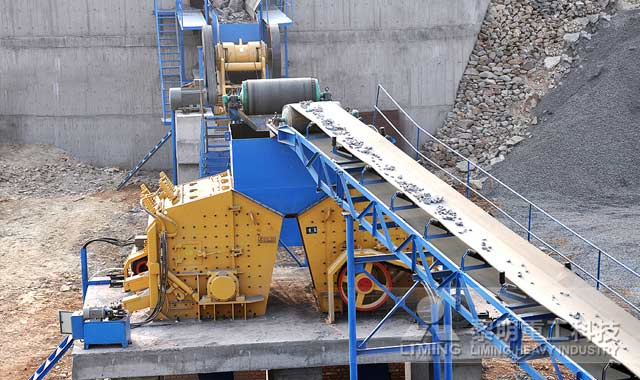Limestone is a crucial material in the aggregate industry, used extensively in construction, road-building, and various other applications. The production of aggregate from limestone involves several steps, with crushing being a central process. The choice of crusher plays a significant role in determining the quality and efficiency of the production.

Types of Crushers for Limestone
- Jaw Crushers: Jaw crushers are often the primary crushers in limestone processing. They use compressive force to break down large pieces of limestone into smaller, more manageable sizes. The working mechanism involves a movable jaw and a stationary jaw, where the movable jaw exerts pressure on the limestone, causing it to fracture. This type of crusher is particularly effective for coarse crushing, handling large volumes of material efficiently. They are well-suited for applications where the feed material is relatively uniform in size and shape.
- Impact Crushers: Impact crushers are designed to crush materials by applying high-speed impact forces. They are especially useful for medium to fine crushing of limestone. These crushers utilize a high-speed rotor equipped with hammers that strike the limestone, causing it to break apart. Impact crushers are known for their ability to produce a high percentage of fine aggregates and for their efficiency in handling varying sizes of material. They are commonly used in secondary and tertiary crushing stages.
- Cone Crushers: Cone crushers are used for secondary and tertiary crushing of limestone. They work by squeezing the limestone between a fixed cone and a rotating cone, which crushes the material into smaller sizes. Cone crushers are known for their high crushing ratio and are ideal for producing high-quality aggregate with consistent gradation. They are particularly effective for hard and abrasive materials, making them suitable for various stages of limestone processing.
Factors Influencing Crusher Selection
When choosing a crusher for limestone aggregate production, several factors should be considered:
- Material Characteristics: The hardness, moisture content, and size of the limestone affect the choice of crusher. For example, hard limestone may require a more robust crusher like a cone crusher or impact crusher.
- Production Capacity: The desired production capacity plays a crucial role in selecting the right crusher. Jaw crushers are often chosen for high-capacity primary crushing, while impact crushers and cone crushers are selected for secondary and tertiary crushing stages.
- End Product Requirements: The desired gradation and quality of the final aggregate product influence the choice of crusher. Impact crushers are often preferred for producing fine aggregates, while jaw crushers are suitable for larger, coarse aggregates.
- Operational Costs: The initial cost of the crusher, as well as maintenance and operational costs, should be evaluated. Some crushers may have higher upfront costs but offer lower operational costs in the long run.
Selecting the right crusher for limestone aggregate production is crucial for optimizing the efficiency and quality of the final product. Jaw crushers, impact crushers, and cone crushers each offer distinct advantages depending on the specific requirements of the application. By carefully considering factors such as material characteristics, production capacity, end product requirements, and operational costs, producers can ensure that their crushing operations are both effective and cost-efficient.

